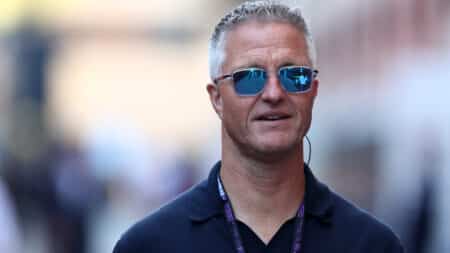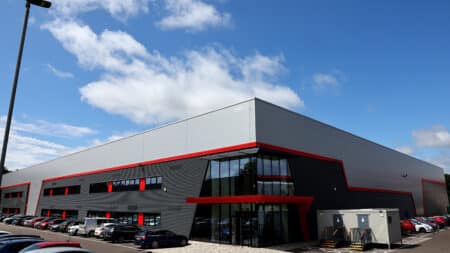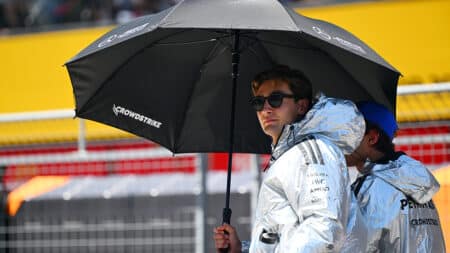
'Not even the best F1 driver in his family' - Pain of being the other Schumacher
He has always been overshadowed by his older brother but Ralf Schumacher’s 50-year story is more layered, and more human, than the stats alone suggest, says Matt Bishop
That was too close for comfort. The multiple world championship-winning Enstone team came perilously close to extinction towards the end of last year as financial brinkmanship – both from its previous owners and Bernie Ecclestone – played out in Renault’s negotiations to re-purchase the team it had sold at the end of 2009. A press release confirming Renault’s withdrawal from the proposed deal was being prepared in the week before the Abu Dhabi Grand Prix, but thankfully didn’t need to be sent out. Renault has returned as a factory team, its RS16 (Renault Sport 2016) models will be raced by Kevin Magnussen and Jolyon Palmer. Bob Bell has returned as technical director to the team he left at the end of ’09 to become one of the architects of Mercedes’ current dominance.
From the archive August 2015: Outstanding in the shadows: Mark Hughes talks to Bob Bell.
So just how feasible is it that the team can return to its glory years after so many years of under-investment and enforced contraction? It may take a while, but the foundations remain sound. The stuttering cashflow of the team in its Lotus incarnation lost it many good technical people. In addition to the enforced departure of Pat Symonds, this team also lost in subsequent years: Bell, James Allison, Dirk de Beer, Naoki Tokunaga, Mike Elliot, Tim Densham and more. These were just the high-profile names, but a lot of talent simply left the building over the years, leaving stalwarts like Alan Permane (trackside director), chief designer Martin Tolliday and Nick Chester (Allison’s replacement as technical director) to hold the fort. The remarkable thing was just how long the team remained a viable competitive force on track as these layers of gifted, experienced racing people left, highlighting just how much strength in depth there was there and also how good the basic facilities were. It was an early adopter of the 60% wind tunnel (well ahead of Mercedes, for example) and some of the simulation programmes there would be the envy even of teams such as Williams.
But more than that, it was steered well technically. Allison was extremely highly regarded and kept a talented group focussed and committed during a time of upheaval. He became very uncomfortable when those who had shown so much commitment to the cause began suffering with payment delays and this played a big part in his departure at the end of 2012. That body blow was only increased when he took the very highly rated head of aero de Beer with him to Ferrari, the team having already lost de Beer’s chief assistant Mike Elliot to Mercedes. The big budget teams were sucking the talent out of Enstone – yet still it gave a good account of itself. Into the second half of 2013 Romain Grosjean and Kimi Räikkönen took it to the dominant Red Bull of Sebastian Vettel, and were within sniffing distance of victories in Germany, Hungary and Japan, a remarkable achievement under the circumstances. Räikkönen – victorious for the team at Yas Marina 2012 – left before the end of ’13 on account of not having been paid.
But finally there was just too much loss, not enough replacement or restructuring and too much demand placed on it by the new formula of 2014. The disastrously uncompetitive ‘twin tusk’ car left the team among the backmarkers, its aerodynamic flaws not compensated for by Renault’s first attempt at a hybrid power unit. A slightly better chassis combined with a much better (Mercedes) engine pulled it back to competitive respectability last year but it was sad to see it limping to races, being locked out of hospitality units, being delayed in going on track until its tyre bills had been paid, having its cars arrive late at the track for the same reason.
For 2016 it has a respectable, but not huge budget by today’s ridiculous standards, though this may well expand. On the downside it obviously has to revert to its own Renault power unit. Renault Sport remains behind the 8-ball on the hybrid power units it wanted F1 to adapt and its lack of progress last year was extremely disappointing. The problem remains within the combustion chamber, performance development was delayed half a season by a resonance problem that destroyed pistons – and when the new unit arrived, it proved no faster. There’s a lot of catching up to do and for the immediate term engine hopes rest on Mario Illien’s reworking of the cylinder heads.
But at Enstone a recruitment drive is already underway to rebuild what was lost during the Lotus years, the facilities are good, a core of experienced and committed racers remain. The long-term prospects are good but just maintaining the ‘lower Q3’ level of respectability enjoyed in 2015 would be an achievement this time around. Pastor Maldonado’s Venezuelan millions failed to arrive and he’s been replaced by Kevin Magnussen, a terrific driver with sky-high motivation while Palmer’s adaptation to F1 will be interesting; his racecraft in GP2 was outstanding and he’s the sort of bright guy that could just keep getting better. Let’s see.
From the Archive (August 2015): Reflections with Nigel Roebuck– Getting to know Kevin Magnussen.

He has always been overshadowed by his older brother but Ralf Schumacher’s 50-year story is more layered, and more human, than the stats alone suggest, says Matt Bishop

Cadillac's Formula 1 entry was approved just 364 days before its first grand prix weekend. We took a look inside its Silverstone base to find out how it's building a brand new team from scratch

Describing this year's championship race as a 'battle' might be slightly over-egging it, writes James Elson

You had to read between the lines at the 2025 Austrian Grand Prix as George Russell dropped hints over about his dissatisfaction, and F1 sent a message to FIA president Mohammed Ben Sulayem